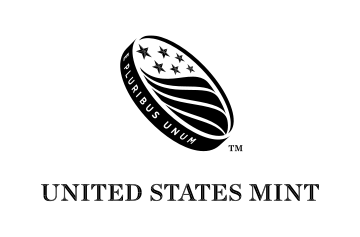US Mint

The US Mint
The US Mint was founded in 1792 in Philadelphia and has been the nation's sole manufacturer of legal tender coinage. It is responsible for producing circulating coinage for the nation to conduct its trade and commerce.
The US Mint also produces coin-related products, such as proof, uncirculated, and commemorative coins; Congressional Gold Medals; as well as silver and gold bullion coins such as the American Silver Eagle and American Gold Eagle coins.
Modern Day Mint Facilities
The US Mint is headquartered in Washington, DC and operates modern, state of the art minting facilities in Philadelphia, Denver, San Francisco and West Point. The mint at West Point is primarily for minting of bullion coinsused for minting .
Most of the modern bullion investment coins are issued from the West Point Mint, including American Silver Eagles, American Gold Eagles, American Platinum Eagles and Gold Buffalo 1 oz coins. Proof coins and commemoratives are minted in both San Francisco and the West Point Mint.
Coins that are produced at the Philadelphia Mint do not typically contain mint marks.
In 2023, a mint mark was added to the obverse of the American Eagle coins below the phrase "In God We Trust" indicating coins minted at the West Point Mint.
https://www.usmint.gov/
US Mint Gold Coins and Bars
US Mint Silver Coins and Bars
More Posts about US Mint
- 2025-W American Silver Eagle Proof
- 2025 American Liberty Gold Coin & Silver Medal Available in August
- U.S. Mint to Release Limited Edition 2025 Silver Eagle Proof Honoring U.S. Army’s 250th Anniversary
- U.S. Mint Q1 Bullion Sales Declines Year-over-Year Despite Record Gold Prices
- Building a Silver Eagle Short Set of Early Years















